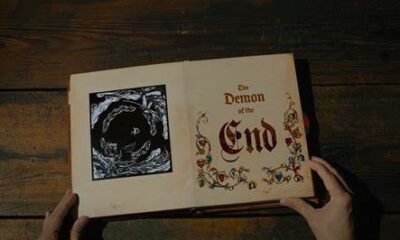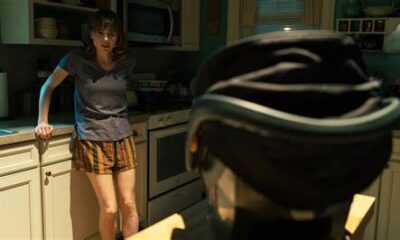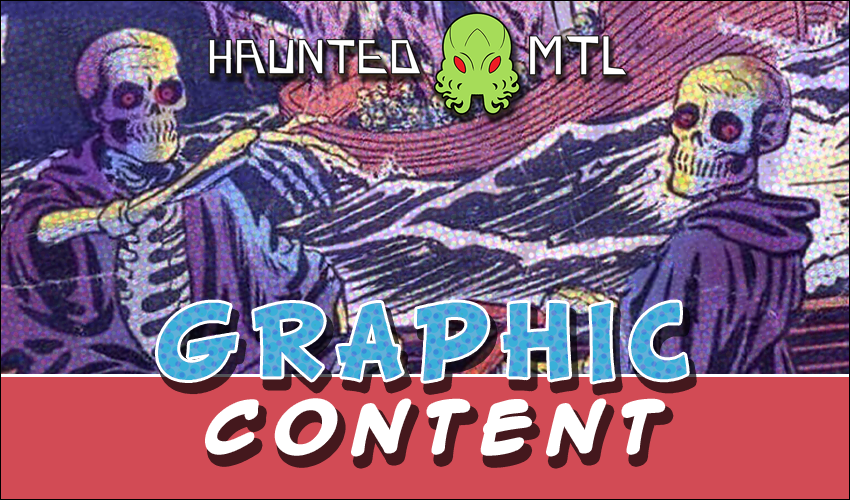
Graphic Content #14: Hellblazer and Killadelphia
Catching up with my reading log this week with the two big titles that have made up the bulk of my column, John Constantine, Hellblazer, and Killadelphia. I can count on these two titles as a one-two punch of quality storytelling, so this pairing always brings me joy.
Too bad I’ll need to break up the band soon. Hellblazer‘s run is long done now. Thankfully, Killadelphia is going strong. But enough about me, how are the comics this time around?
John Constantine, Hellblazer #11
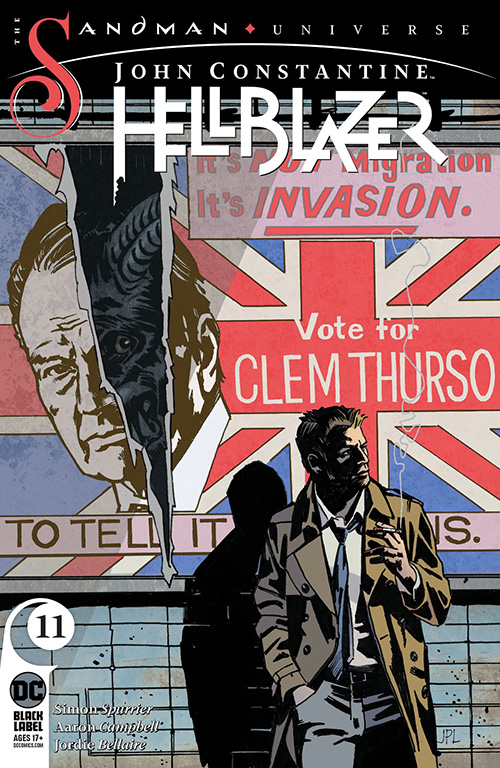
Reviewing the remains of a cancelled series is a little odd, isn’t it? Part of my own review process is to look at the potential of the comic in the future – it is why I have not really enjoyed Alien all that much. Knowing that Hellblazer got cut short kind of guts that, but I do the best I can with the knowledge that this issue of John Constantine, Hellblazer, is the penultimate issue. The run has been great, and if there were any cosmic justice, I wouldn’t see the end of the road here.
Issue #11, titled “The Sceptered Isle: Part One,” has John Constantine piecing together the murder of a politician who is far older than any of his constituants would have ever suspected. I am not going to assume I know how things work on the British isles, of course, but one would assume the working many might frown upon that sort of thing. What we get is the murder of a long-lived mischievous entity in England – Rawhead. Far from a nice entity, he is still seemingly a victim of the plans of the older John Constantine that is bumming around London. A literal troll who becomes the ultimate troll – a politician.
Simon Spurrier’s writing here is great. Sharp. He deftly weaves an interconnected history between Constantine and Rawhead, who goes by many names. There are some interesting nods and angles here that I am sure I missed as well, not being a Brit myself. The story is very much in line with the political critique that has been an undercurrent in the entire run. I enjoy political magick Hellblazer, but I can see how some readers may feel it dates the material. As it stands, reading the issue now, it is most definitely rooted firmly in the era of Boris Johnson. How the modern-day connects to the mythical foundation of Britain, on the other hand, is peak Hellblazer – shocking and cynical – wait until you see it.
One element of the story I am iffy on is how this entity ties to one of John’s current companions. I wouldn’t dare spoil it here, but the path Spurrier treads skirts familiarity a bit. It is still an interesting angle, however. Not necessarily shocking, though. That might be the major flaw of the issue for me.
Aaron Campbell’s art here is great. It fits the tone of the story quite well, particularly his approach to John’s face. John is an ugly man in many ways, and Campbell doesn’t shy away from it. His Constantine looks like he’s taken a few pops to the face, and most of them well-deserved. Early on in the run, I had expressed some concerns about the inconsistency in John’s appearances, but it seems that Campbell has nipped that. The two-page spread near the end of the issue is definitely one of the most disturbing and bleakly hilarious images in the run as well. Jordie Bellaire’s colors work well with Campbell’s art. There is a lot of sickly green and brilliant red that punctuates the subdued colors. Wonderful stuff.
To say that this issue introduces a giant wrinkle into John Constantine’s world would be an understatement. And to do so in such a wonderfully sordid and gross way is particularly fun. I admit that the reveal of a certain character’s connection to Constantine is a little contrived, but I am willing to accept its logic. Hopefully, Spurrier will continue to work on Hellblazer in some capacity – his approach has been entertaining.
 (4 / 5)
(4 / 5)
John Constantine: Hellblazer #11, written by Simon Spurrier and illustrated by Aaron Campbell, is available from DC Comics and your local comic shop.
Killadelphia #11

Since we last covered Killadelphia, it was announced that Rodney Barnes will be writing adventures in the world of The Evil Dead with Army of Darkness: 1979. I’m very excited about that because of how good Killadelphia has been. Killadelphia has been moving at a steady clip, so I am very excited to see what Barnes does with Ash Williams.
But, I digress, let’s turn to Killadelphia #11, “Burn Baby Burn, Part V, Changing the Story.” Much like last time, this issue drifts between the past and the present. I do have some concerns that things may be slowing a tad. Jupiter’s raid is still happening and the Sangster crew spends most of the issue talking and thinking. Tevin finds himself wandering the afterlife and has a brief conversation with John Adams about his role in events as well, which ends up being one of the more interesting moments in an issue that continues a lot of place setting.
We are thrown yet another curve ball with Abigail Adams’ past. The character already has a lot going on and I am not sure that expanding her sexuality is necessary. LGBTQ+ representation can come in ay number of ways like with a new character. The immortal, vampiric former first lady running a vampire army is a lot for a single character – making her bisexual almost feels like a hat on a hat when there are other characters who could make for good representation. It’s not an issue of historical authenticity – rather it is giving one character a lot more than most – especially the connection to Thomas Jefferson. It definitely builds on themes Barnes has been building on in the series, but I worry this one was more for suprise than anything else. It feels a bit too writerly for Killadelphia.
The whole issue revolves around the lies that people and vampires tell themselves: Abigail and her loves, Jupiter believing he had an agency here, and James Sr. thinking he can ever truly leave Philadelphia for the after life. It’s good material. The issue has a satisfying enough resolution as well to where my concerns about he pace may be alleviated next issue. We’ll see.
I had previous covered a bit of the backing comic, “Elsium Gardens,” but I have decided not to do so, mostly so my reviews do not grow any longer than they already are.
As for the art, it can be tough to find different ways to restate the obvious: Jason Shawn Alexander is excellent at what he does. The blood splatters were particularly divine and really reflect motion. He does the best blood in the business, I’d wager. Luis Nct’s colors are also wonderful – whether tackling the gory chaos of the streets or the subtle colors of the afterlife.
Overall, this is a solid issue of Killadelphia, of one of the best horror comics out there. The pacing, which had the potential of derailing the progress of the story may not be a concern going forward given the ending of this installment. I do have some concerns of heaping too much on a single character, but Barnes work has been excellent and I am willing to trust his judgement here. I am eager to see where this goes.
 (4 / 5)
(4 / 5)
Killadelphia #11, written by Rodney Barnes and illustrated by Jason Shawn Alexander, is available from Image Comics and your local comic shop.
See you soon with another pair of reviews. I am also hoping to dive back into Swamp Thing coverage again, as soon as possible. I just want to tackle this backlog of comics.
In the meantime, please let me know what you think of the reviews. I want to make sure that I am not giving away too much. I also want to make sure they are enjoyable. If you can, drop a comment.
Horror in graphic novels
Read Hide if you need a dark graphic novel to talk about over Thanksgiving
Thanksgiving is coming up this week if you live in America. And many of us are going to be in contact with younger relatives. And some of you might be on a mission to be the cool/bad influence relative that introduces them to the horror genre. If so, I have just the graphic novel for you.
Published in September of 2023, Hide is based on the novel of the same name by Kiersten White. It was adapted into a graphic novel by Scott Peterson, and illustrated by Veronica and Andy Fish. It tells the story of fourteen people who believe they are in a reality show, playing Hide and Seek in an abandoned theme park. It should surprise absolutely no one to find out that the creators of the show have something much darker in mind.
The story
Our main character is Mack. She’s had about the worst rough start to life one could imagine and is currently living in a homeless shelter. There, she’s given the opportunity to participate in a game show, playing hide-and-seek.
I like to think that if the shelter manager had known of Mack’s horrific past, she wouldn’t have ever made that suggestion.

Mack signs up and soon finds herself in an abandoned amusement park with thirteen strangers. The rules are simple. Hide during the day, and be the last person found. Of course, this is nothing but a lie. There will be no winners, only victims.
What works
The first thing we have to talk about is how Hide the graphic novel compares to Hide, the original book. Of course, there wasn’t going to be enough room for every single part of the story. There were some cuts. But it doesn’t feel like anything essential was cut here. The characters remain the same. The storyline is still there, sans any structural issues. Often, this is a difficult thing to do. Some stories don’t translate from one medium to another. But Peterson did a wonderful job.
Of course, we can’t talk about a graphic novel without talking about the art. And the art in this book is fantastic. The colors are rich and vibrant. Everything looks exactly like one might picture it when reading the novel.
Except for the monster, which I have to admit I pictured more like a Rat Creature from Bone.
My favorite part was the journal entries. I loved the cryptic sigils that are scribbled over the page without explanation. I loved the different handwriting. I loved the clippings of newspapers and pictures. The whole thing was just wonderfully, eerily, immersive.
Finally, I want to point out that Hide is a great graphic novel even if you’ve never read the book, and never intend to. This is not a companion for the book. It tells the story all on its own. And yes, reading a graphic novel is just as valid as reading any other novel. This is just a good story, with good artwork. No other reading is necessary.
What didn’t work
There was only one thing I didn’t love about Hide. And that was the ending.
It’s usually the ending.

In the novel, the ending is ambiguous but satisfying. This ending was, without ruining it, a little more ambiguous. There are questions I really wanted answers for that I didn’t get. There is at least one character that I’d like to know about. Are they okay? I don’t know. And this ending doesn’t even really give us a hint. All we can do is hope.
If you are going to be picking this up for a younger person, be aware that there is some rough language. There are also a few graphic scenes of violence, so if that’s the sort of thing that will get you banned from further holiday events, be aware. But if you have a tween or teen who needs to be encouraged to delve into the creepy side, Hide is a great way to do it. Of course, there’s no shame in just reading it yourself.
 (4.5 / 5)
(4.5 / 5)
Book Reviews
Vermis II: Mist & Mirrors, a Book Review
Vermis II: Mist & Mirrors is a graphic novel by Plastiboo, acting as the “official guide for a game that doesn’t exist.”
Vermis II: Mist & Mirrors is a graphic novel by Plastiboo. The team behind the work includes Plastiboo as the artist, Hollow Press as the publisher, Michele Nitri as the editor, Christian Dolz Bayarri as the graphic designer, Marco Cirillo Pedri as the graphic supervisor, and E.R. as the English editor and proofreader. The Vermis collection seems sold out in its current editions, but I still recommend ordering from the original publisher, Hollow Press.
Who stares back from the dark glass? The Wayfarer travels–cursed and haunted by their past–through the distant lands and places within the Mist & Mirrors. Endure a corrupt world and struggle to fend off the curses that mark you. Venture forth, Wayfarer, and perhaps find peace and salvation.
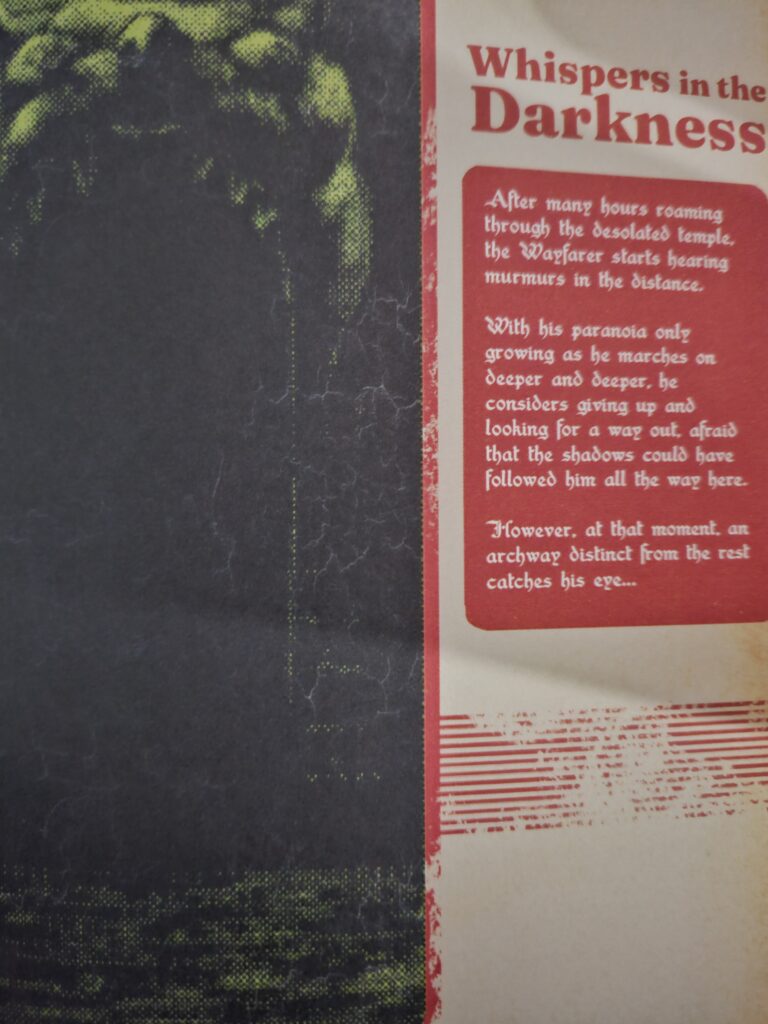
What I Like about Vermis II: Mist & Mirrors
The premise remains an “official guide” to a game that does not exist. However, one key distinction that stands out is the corrosion of this “official guide” mark, suggesting Mist & Mirrors centers itself as a graphic novel. In this sense, it more accurately hits its vision while providing an engaging story.
Mist & Mirrors places its character selection at the end of the graphic novel, instead, choosing a character and allowing the reader to follow that journey. While this moves away from the “official guide” concept, it better fleshes out the world and creates a more independent product.
Where Vermis I held a heavy retro-game aesthetic, Vermis II takes this to the next level while adding a wider range of color than the original. Not only does this add more aesthetic variety, but it also vastly improves readability. My greatest critique of the first graphic novel was the general lack of readability that impacted the experience, but Mist & Mirrors seems to take this to heart. Beyond the variety and improvement, the design changes the color themes to match the distinct lands the “Wayfarer” embarks on, giving a direct purpose to the changes.
On starting the graphic novel, I half expected a spiritual successor set in a new world. While its setting certainly differs from the original, Mist & Mirrors expands on the lore and history. In fact, the exploration of Mist & Mirrors adds value to the original and encourages a re-read. Honestly, that’s what all sequels strive (or should strive) to succeed.
Despite the colorful innovation, Vermis II: Mist & Mirrors delivers that same bleak horror popularized by Dark Souls. It still wears its inspirations on its sleeves while better communicating its “game mechanics.”

Tired Tropes and Triggers
Again, there aren’t many points worth mentioning regarding tropes or triggers. As the graphic novel takes themes and trends from the Soulslike genre, it’s dark and bleak but not overwhelmingly so.
Payment and delivery (for American audiences) still come with a 15 to 45-day wait period with little room for verification or updates. The process through PayPal remains seamless, and I received the novel within the timeframe, but it’s a consideration.

What I Dislike about Vermis II: Mist & Mirrors
While there are notable points to mention in this section, Mist & Mirror vastly mitigates Vermis I’s core issues. However, that isn’t inherently the same as fixing them in some cases. For example, readability remains a slight issue. I will emphasize it as a slight issue with the vast improvements implemented.
For those fans of the specific niche that Vermis aims to deliver, Mist & Mirrors tones down the “official guide” aspect. Instead, it favors a more straightforward narrative that follows a specific character. This brings life to the “game world” and makes an independent product but limits Vermis I’s game guide concept.
On a more personal note, I did enjoy the concept of Vermis I’s classes over the classes of Mist & Mirrors. Naturally, there are some interesting concepts, but nothing haunts me like the Infant Seeker or Rat Man. However, the new choices seem to provide a stronger narrative and backstory.

Final Thoughts
Vermis II: Mist & Mirrors vastly improves in many aspects of the original, telling a story set in its bleak and fascinating world. While it does veer from the original concept, it does so to make a more independent product. If you are looking to lose yourself in a strange world or dive deeper into Vermis’ underexplored lore, Mist & Mirrors seems tailor-made for you.
Horror in graphic novels
Bad Dreams in the Night
Published in April of this year, Bad Dreams in The Night is a collection of horror comics by the artist and author Adam Ellis. With the description stating that it is a graphic novel version of Scary Stories to Tell in the Dark, I had to get my hands on it. And it did not disappoint.
The stories
Bad Dreams in the Night consists of eleven short horror stories. I honestly don’t think there’s a bad one in the whole bunch. So let’s just highlight a few.
Easily my favorite story in the book was Little House in the Sea. It’s a sweet, eerie little tale that seems like a pinprick view into a dark and horrifying world. It left me with so many questions that I fear will never have answers. The story is about a young woman and her mother, who live on a little island all alone. The young woman is never to ask about what is on the other side of the sea. Then, her mother dies. And everything changes, but not by a lot.
Green Ribbon was another great story. It’s a retelling of the classic Girl With a Ribbon story from the original Scary Stories book, in which a man is confused and eventually angry that the love of his life wears a ribbon around her neck and won’t tell him why. I liked this updated version. It’s a stark reminder that just because we marry someone, we aren’t owed all of their secrets.
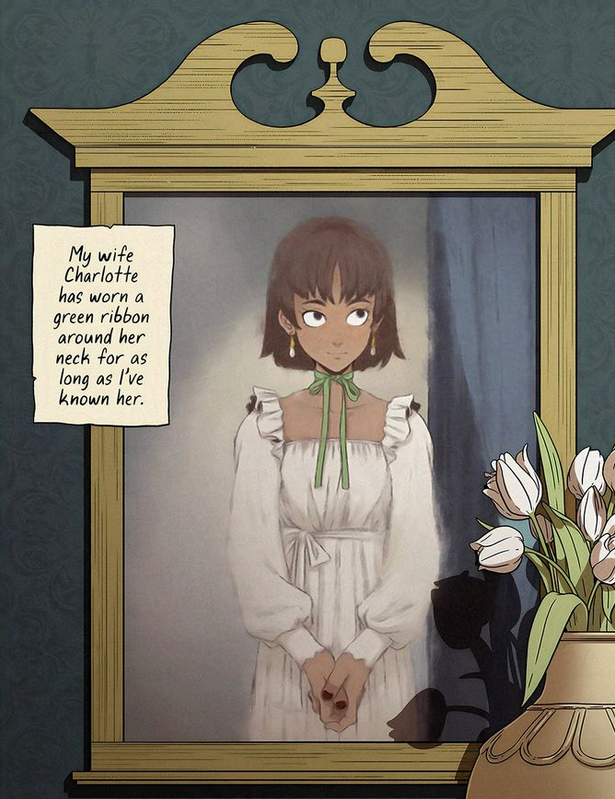
What worked
Of course, the first thing I have to point out about Bad Dreams in the Night is the fantastic artwork. Ellis was a cartoonist first, and it shows.
The artwork is part of the storytelling as well. The best example of this is the story Better Kate Than Never. The younger sister character, Taffy, has such an animated face during the scenes with a ‘studio audience’. When she is just herself, her face is flat, and far more mature than we’d expect for a girl her age.
Though, I suppose based on the story, she might be any age.
Another really enjoyable thing was the mini-essays at the end of each story. As a creator myself, I love the little peeks into the creative process. I know how I come up with stories. But it’s different for everyone, and the story behind the story is often just as fun.
Finally, I have to praise a feature that applies to Ellis’s work overall, not just this book. Whenever he writes scary stories (and he has posted quite a few on his social media) they are a fascinating blend of cute and horrifying. The artwork always has a lovely, innocent, cartoonish look. The children always look like cartoon children, with exaggerated large heads and wide circular eyes.
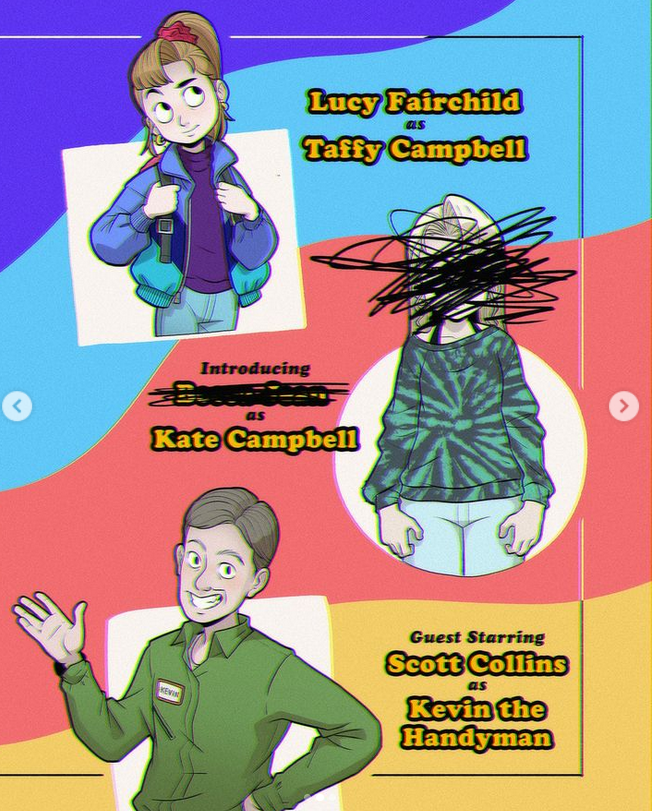
At the same time, Ellis doesn’t pull any punches when it comes to the blood and gore. One story in particular, Milk Door, is a perfect example of this. I don’t want to spoil the ending for you, but it is graphic, horrifying, and wonderful.
What (kind of) didn’t work
I only have one issue with this book. If you follow Ellis on social media, you’ve likely seen at least some of these stories before.
Though, even as I say this, I’m not sure what could have been done about it. Only the beginnings were shown on Instagram. This was a marketing tactic and an effective one. You get the setup for free, but you have to read the book for the punchline.
Bad Dreams in the Night was a really enjoyable way to spend a few hours. In the end, my only real complaint is that it could have been longer. But of course, that is one of the chief rules of entertainment. Always leave people wanting more.
(usr 5)
By the way, if you like this you might enjoy my haunted apartment novella, Quiet Apocalypse. The main character is a modern witch, and I share some real magic in this fictional story of an unexpected end of the world.




